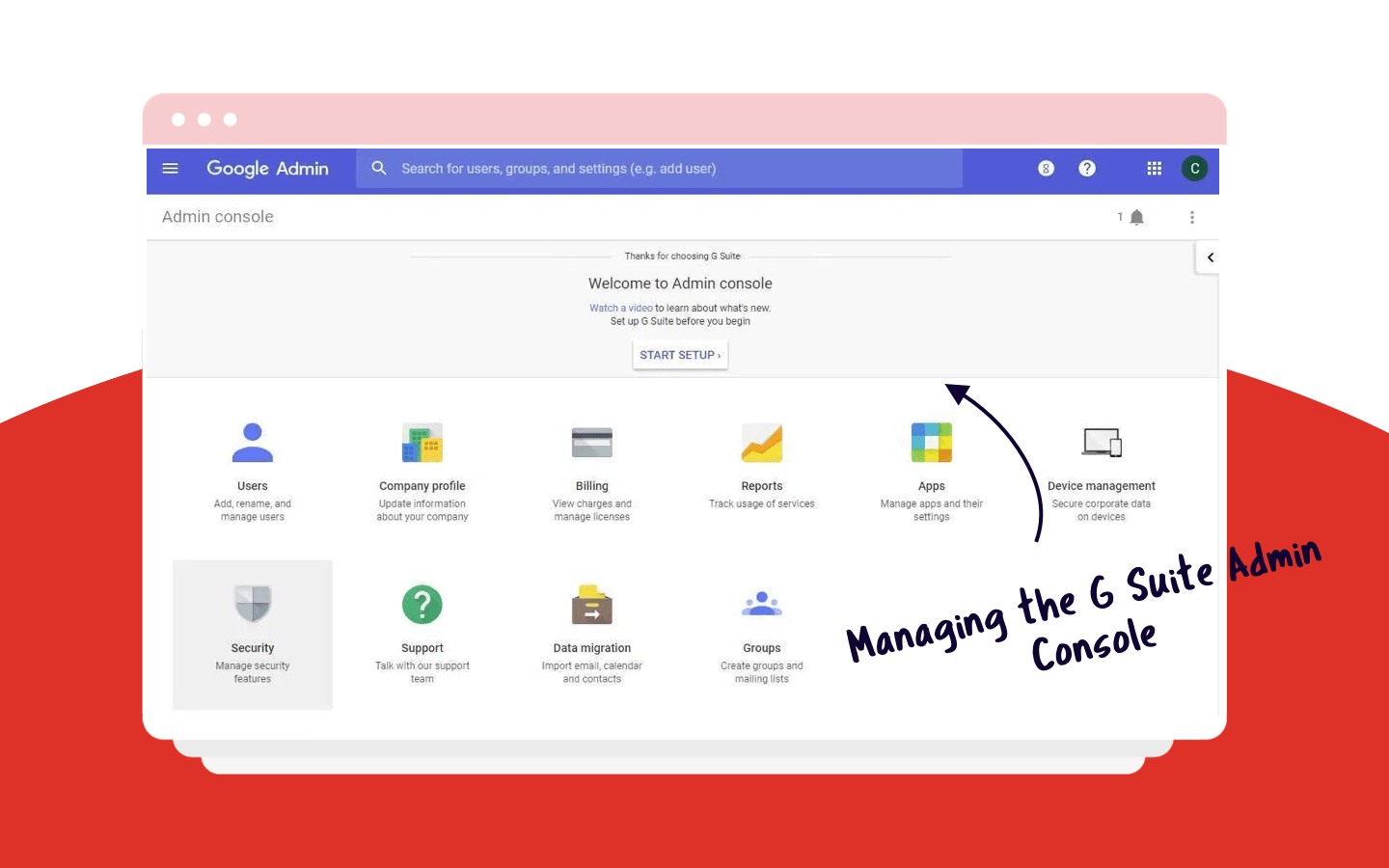
You’ve just created your G Suite account, and right after you bumped into the G Suite Admin console. This is the place where you are going to spend some time for the next days to manage your G Suite account.
Therefore, if you need to add new users, groups, control the apps you have access to, migrate data, manage security, you will need to learn how to use the Admin console.
This guide’s purpose is to help you understand each element on this console, so managing G Suite becomes a natural and easy action really for you.
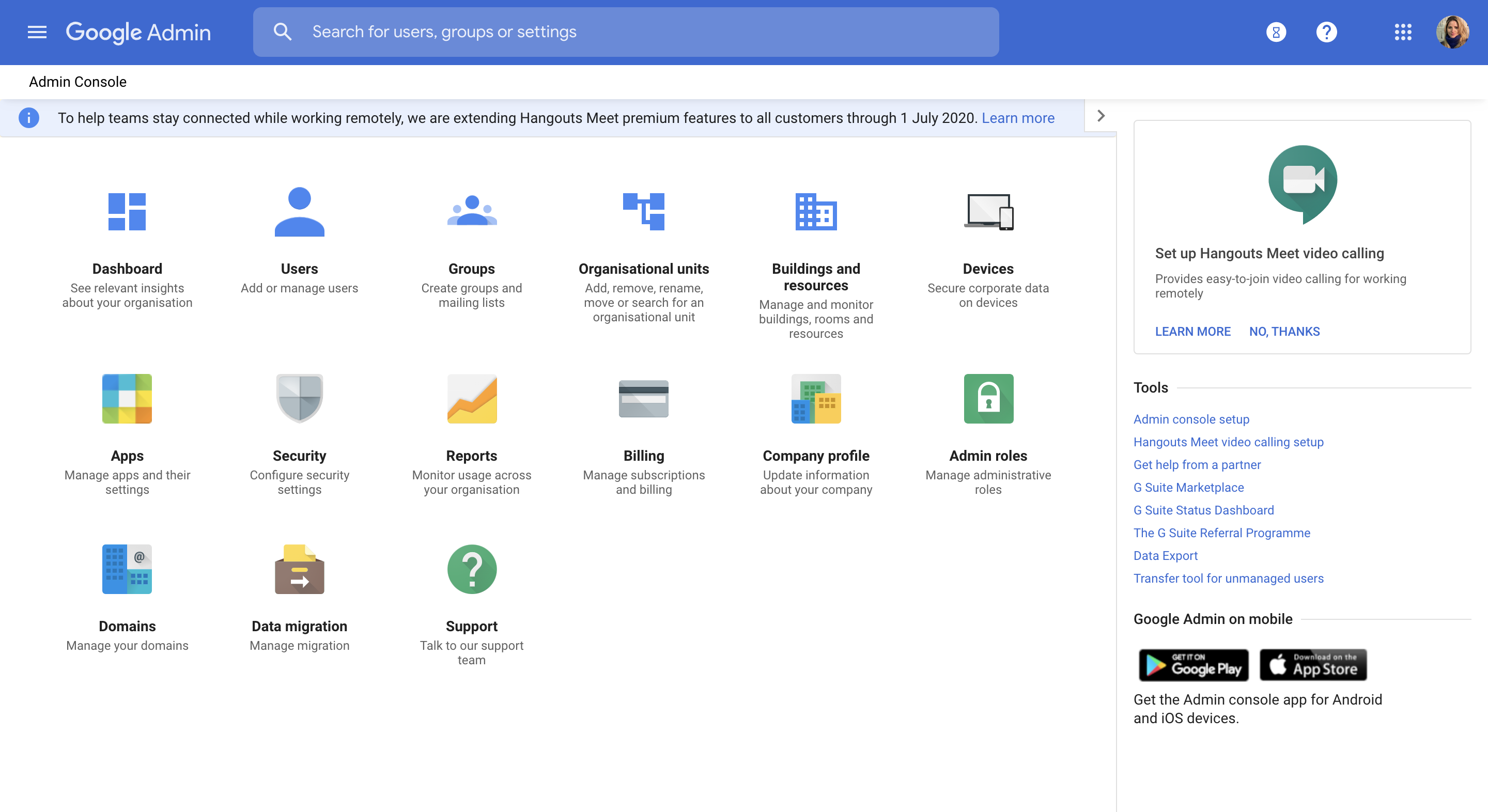 Users
Users
Whenever you need to add new users to your G Suite account, click on this section. Here you will be able to manage all the users associated with your account, as also assign their characteristics such as Job Title and Department. There is important information about their behavior within the account that you can track, for instance, their last login and email usage.
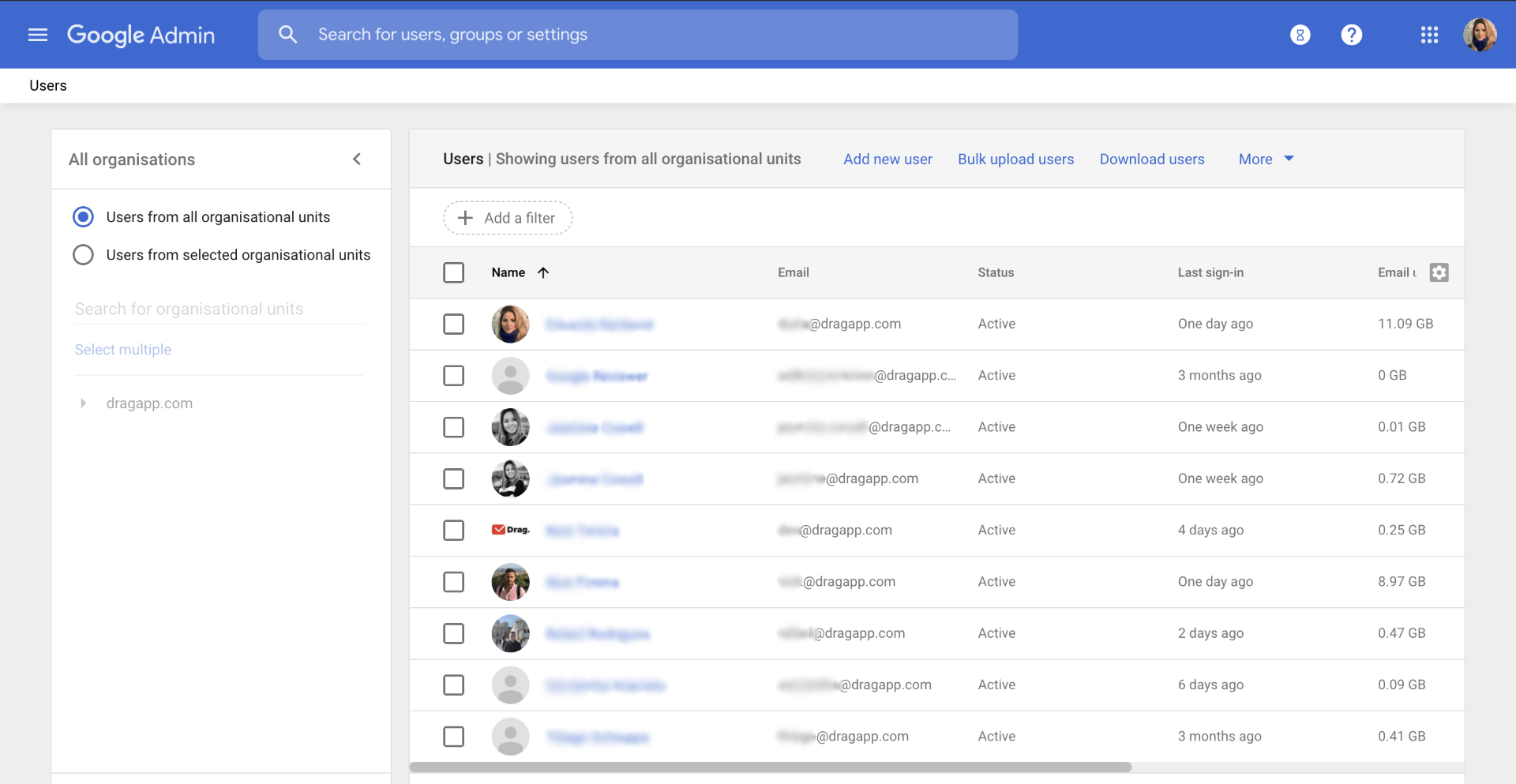
When you click on a user you can manage the following settings:
- Account & contact information
- Associated Google+ profile
- G Suite and services enabled (user-level)
- Aliases and email routing
- Password
- Storage monitoring
- Assigned license
- Groups membership
- Security Settings
- Admin roles
Company profile
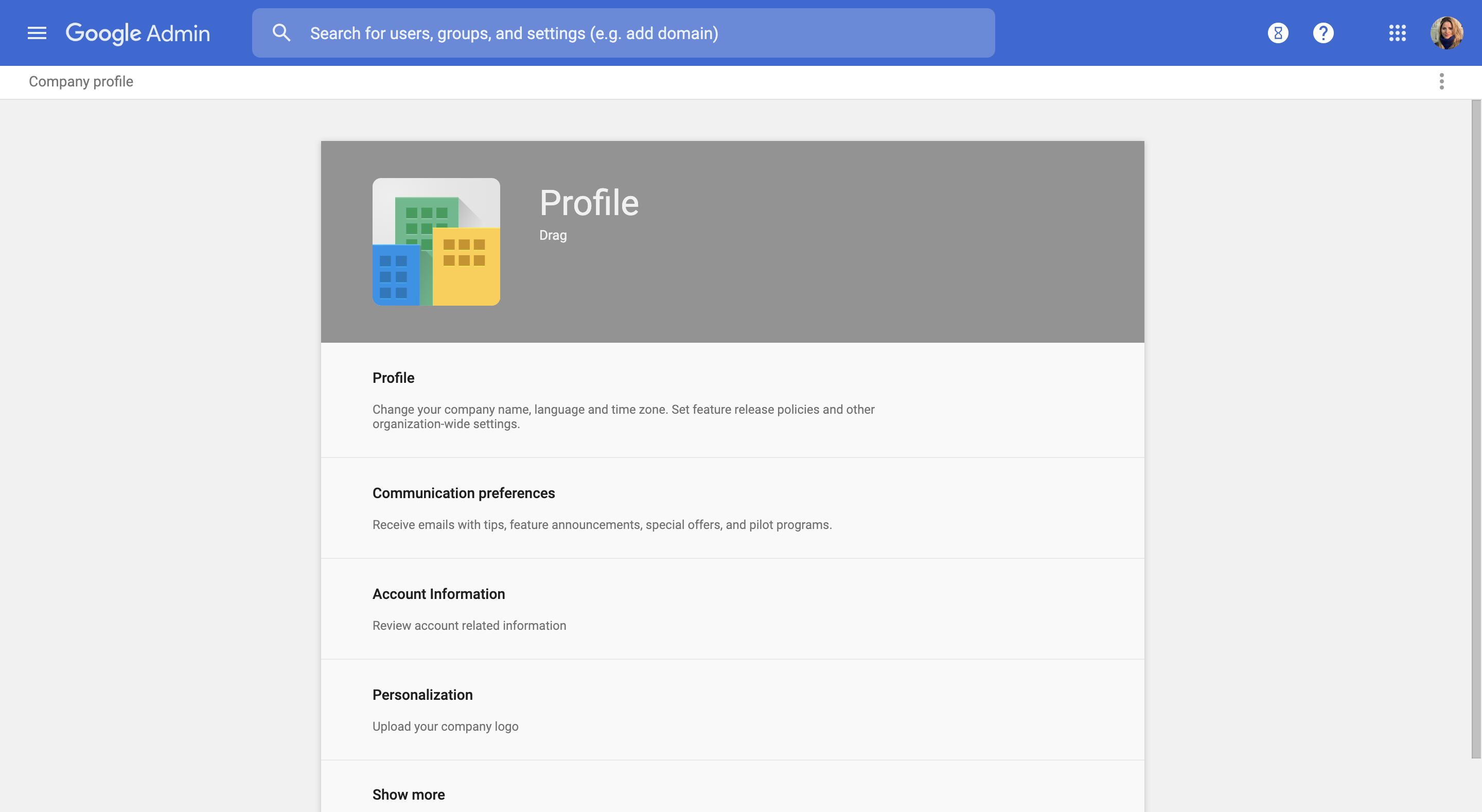
This section of G Suite Admin is where you update your company data. It’s also possible to personalize your account with your business logo and create custom information about your company and personalize your G Suite account with your company logo. Besides that, you can create custom URLs for all the G Suite services for your account users.
- Profile: company name, native language, and your time zone.
- Communication preferences: set which email alerts you want to receive from Google.
- Account information: Review all the information related to your account.
- Personalization: upload your company logo and set other details about your business.
- Custom URLs: A custom web address for a user to access G Suite.
Billing
This is where you view your account subscriptions such as your G Suite plan, Google Voice and etc, with their detailed charges. In addition, you can see the available upgrades to your account. For example, if you have a G Suite Basic plan, the plans Business and Enterprise will appear as upgrade options.
Reports

Here you can track the usage of all the G Suite services and apps available in your account. It’s possible to see all the user activity in this session. When you click on Highlights, located on the left menu, you can choose to see each app’s user activity, status, storage statistics, and also security.
If you click Reports, you will be able to choose to run reports, according to specific services, devices, or users. Moreover, you can run audits to check what tools and services your G Suite users are accessing.
Apps
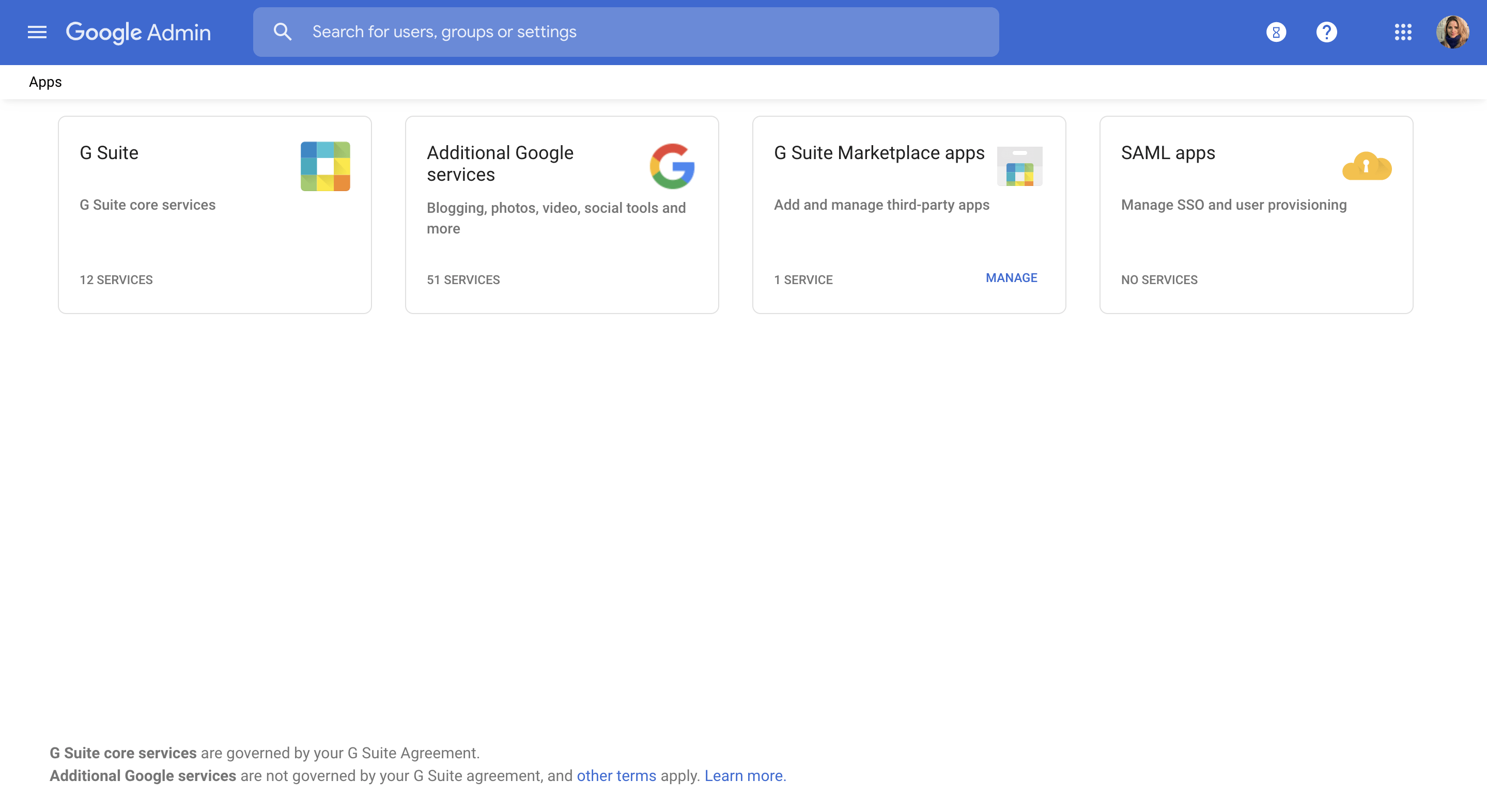
On this session of G Suite Admin console, you can check all the G Suite services available to you, as also their settings. Therefore it’s possible to see which tools you have been using, additional services, G Suite Marketplace apps, and Security Assertion Markup Language (SAML) services that are connected to your account at the moment.
Device management
Managing devices connected to your G Suite account is an additional way of securing your account. You will be able to see the mobile, Chrome and Google devices connected to your account. There is also a session where you can manage all the devices your company owns. In case you don’t recognize any of these devices you can simply remove the access to the particular user that is logged in it.
Security
This is where you manage all security features for your G Suite account. From password management and monitoring to setting up single sign-on (SSO), this page equips you to keep your G Suite account and users secure.
On this session you are going to find the following settings:
- Basic settings
- Password monitoring
- API reference
- Set up single sign-on (SSO)
- Advanced settings
Support
Every time you need help with your G Suite account, you can access the Support session, which is available 24/7 over phone or email. Nevertheless, before having access to the live support, the Help for Admins popup box will appear with suggestions on how to solve the issues or doubts you are having.
Data migration
In case you didn’t know you can import data to your G Suite account from previous emails. Sometimes users that you add to your account need to do this process. You can import contacts, calendars, and emails, but note that it’s necessary to run this tool for each type of data you want to migrate.
In order to do a migration, you need some information such as the migration source, connection protocol, and the credentials of the account you want to migrate from.
Groups
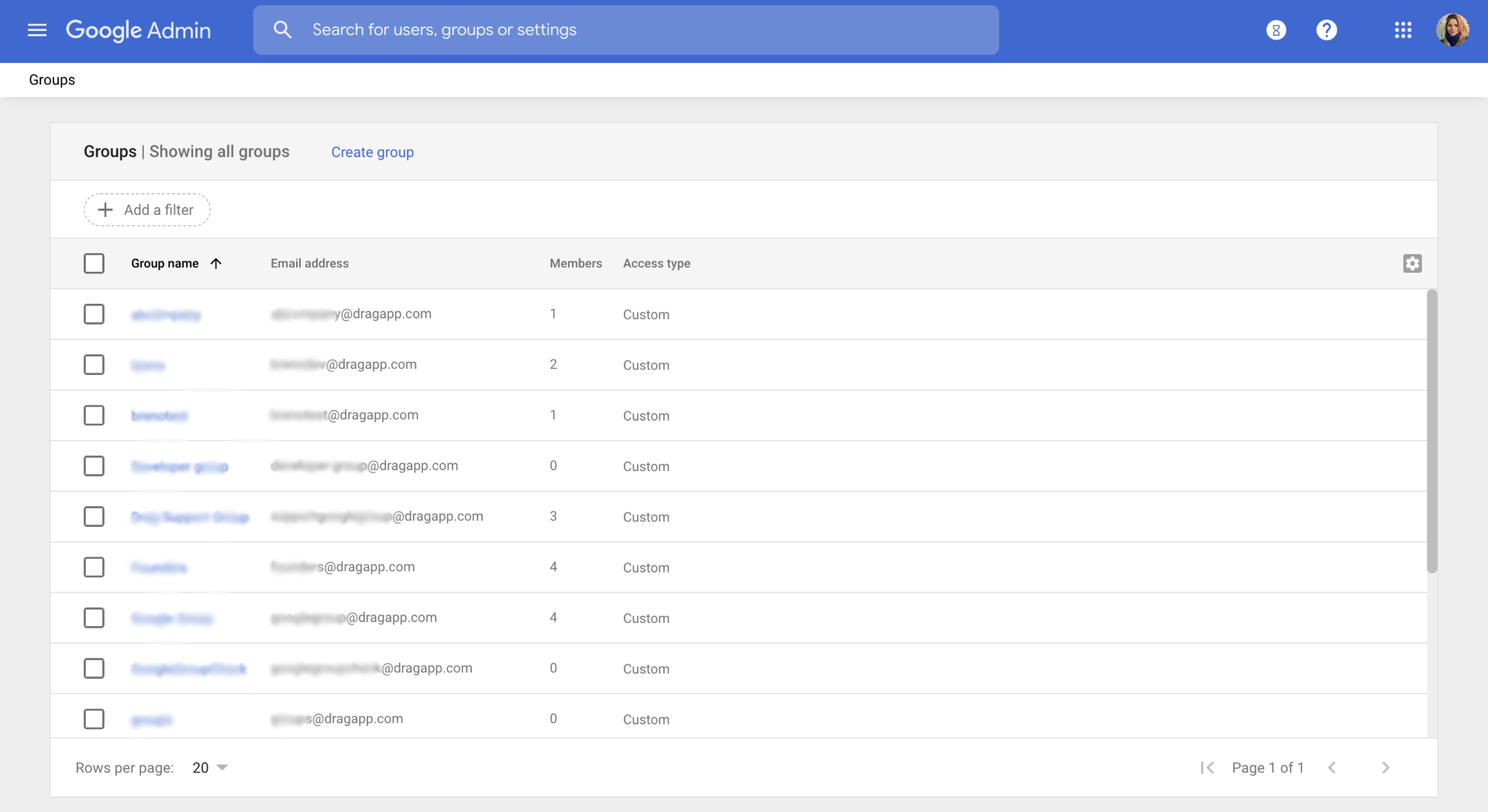
This is where you create groups and mailing lists. Groups are handy for communicating with entire teams or parts of your organization at once. You can also give each group its own calendar for scheduling events and managing team meetings.
Admin roles
Here you can add or remove admins and manage the admin roles and permissions that are currently set on your G Suite account. Here you can also give admin privileges for groups, devices, and services. Besides you can change the permissions that the admins already have.
Domains
Finally, this is the session where you add and remove the domains linked to your G Suite account. It’s possible to either add a new domain or domain alias, although you need to verify the ownership, the same way you did when you set your G Suite account. In addition, you can manage the redirects for new visitors in your domain in case you ever need to perform this action.
Wrapping up
Now that we have explored G Suite Admin console together, how about learning more about G Suite? We have complete guides to help you use its powerful tools the best way possible.
The Most Complete 2020 Gmail Guide
Drag turns Gmail into your Team’s Workspace – One single place to support customers, manage tasks and close deals, from the place teams love: Gmail. We are a Techstars-backed Company, trusted by 30,000 users around the World.
Join 90,000+ in the know.
Subscribe to get the latest tips on G Suite, Collaboration Tools and Email Productivity straight to your inbox.







